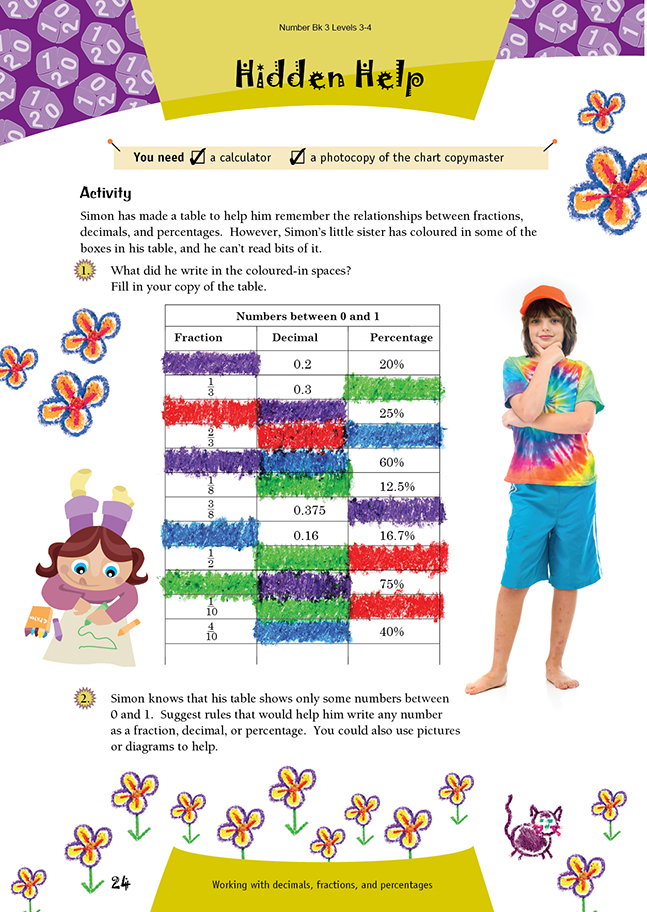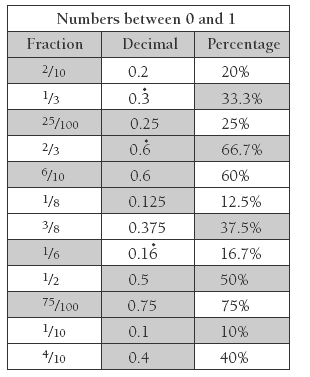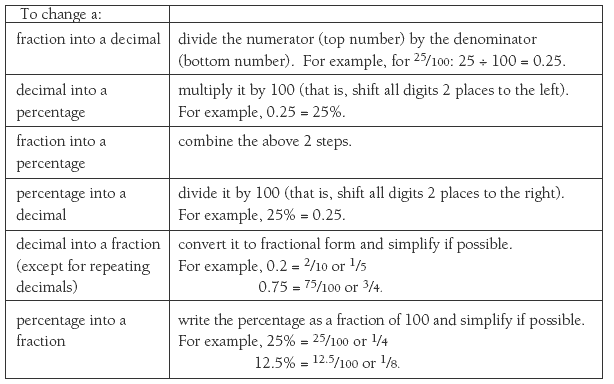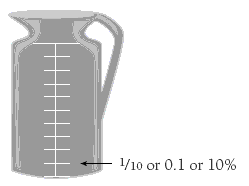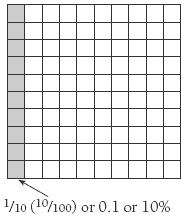This is a level 4 number activity from the Figure It Out series. It relates to Stage 7 of the Number Framework.
A PDF of the student activity is included.
Click on the image to enlarge it. Click again to close. Download PDF (411 KB)
match equivalen fractions, decimals, and percentages
A calculator
FIO, Level 3-4, Number, Book 3, Hidden Help, page 24
Copy of Chart from Copymaster
Students who are progressing to the advanced multiplicative stage of the Number Framework are expected to convert between fractions, decimals, and percentages. Students need to use multiplicative strategies when they are naming equivalent fractions.
The questions in this activity are designed to help the students gain and use an understanding of the relationships between fractions, decimals, and percentages. To complete the table in question 1, it is necessary to know, or work out, how fractions can be converted to decimals (and vice versa), how fractions can be converted to percentages (and vice versa), and how decimals can be converted to percentages (and vice versa). A summary of how these conversions can be done is set out in a
chart in the Answers for question 2 and illustrates how students might respond to this question.
Further possible explanations regarding the relationships between fractions, decimals, and percentages (question 2) include:
• percentages are fractions of 100 that can often be simplified (for example, 75% is 75/100, which can be simplified to 3/4 if it is divided by 1 in the form of 25/25);
• decimals are also fractions: those in the first column to the right of the decimal point are tenths, those in the second column are hundredths, and so on. For example, 0.4 is really 4/10, and 0.75 is really 75/100.
Note that changing a repeating decimal into a fraction requires more understanding of place value, equation solving, and fraction manipulation than we expect students at this level to have.
Ideas for the physical modelling of fractions, decimals, and percentages can be found in Book 7: Teaching Fractions, Decimals, and Percentages (Numeracy series).
Answers to Activity
1.
2. Answers will vary. Fractions and decimals between 0 and 1 are fractions of 1, whereas percentages are fractions of 100.
Possible rules:
A possible picture is a chocolate bar:
Possible diagrams:
Jug
Ceramic Tile
